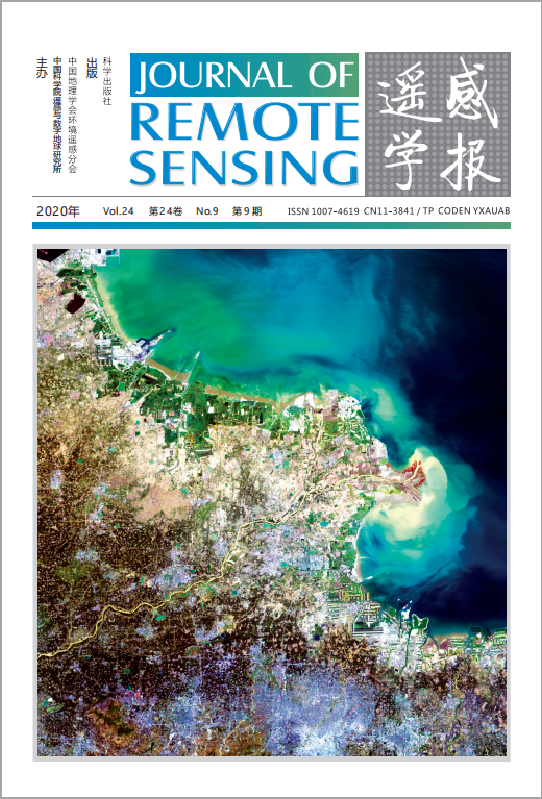下载中心
优秀审稿专家
优秀论文
相关链接
首页 > 2020年第9期封面报道
2020年第9期封面报道
中国山东东营黄河口区域天宫二号遥感影像
封面图片为天宫二号搭载的宽波段成像仪2019-05-02获取的山东省东营市黄河入海口及其周边地区的遥感影像。天宫二号是我国第一个真正意义的空间实验室,由中国科学院空间应用工程与技术中心负责数据接收、处理、存档管理、分发服务等,在轨期间获取了大量高质量数据,并生成了多种类别的标准遥感影像和专题数据产品。宽波段成像仪是中等分辨率的多光谱成像仪,共有 18 个波段,覆盖可见近红外、短波红外、热红外等波段范围,空间分辨率分别为可见近红外 100 m、短波红外 200 m 和热红外 400 m,观测幅宽大于 300 km。天宫二号宽波段成像仪可兼顾陆地和海洋遥感观测。在陆地方面,该数据已在土地覆盖 / 利用分类、湖泊综合监测、农作物面积及生长监测、生态环境评估等方面得到应用,为相关领域研究提供了有效的数据支撑;在海洋方面,该数据可在海岸带资源调查、近海环境监测、海洋防灾减灾、海洋生态保护等方面发挥重要作用。详情请见本期“天宫对地观测数据及应用”专栏 1059—1098 页。
Tiangong-2 Image of the Yellow River Estuary in Dongying, China
The cover image shows the Yellow River estuary and its surrounding areas in Dongying, Shandong province, which was obtained by
the Wide-band Imaging Spectrometer (WIS) of Tiangong-2 Space Laboratory on May 2, 2019. Tiangong-2 is the first space laboratory
launched by China, Technology and Engineering Center for Space Utilization(CSU), Chinese Academy of Sciences is responsible for
receiving, processing, archiving management and distribution of space science and application data of Tiangong-2. During on-orbit
period, a large number of high-quality imagery data are taken by WIS, and many kinds of standard remote sensing images and thematic
products are generated. WIS is a multi-spectral imager with medium resolution carried on Tiangong-2. It contains 18 channels in visible
near infrared, short-wave infrared and thermal infrared band. Its spatial resolution is 100 m for visible near infrared, 200 m for short-wave
infrared and 400 m for thermal infrared, and its observation width is 300 km.WIS has the capability of both land and ocean remote sensing
observations. For land observation, the data of WIS have been applied in land cover/utilization classification, lake monitoring, crop area
and growth monitoring, ecological environment assessment and other related fields. For ocean observation, the data of WIS can be used
in coastal resources survey, inshore environmental monitoring, marine disaster prevention and mitigation, marine ecological protection
and other aspects. For more details, please refer to the issue "Earth Observation Data and Applications of Tiangong" on page"1059—1098 ".


